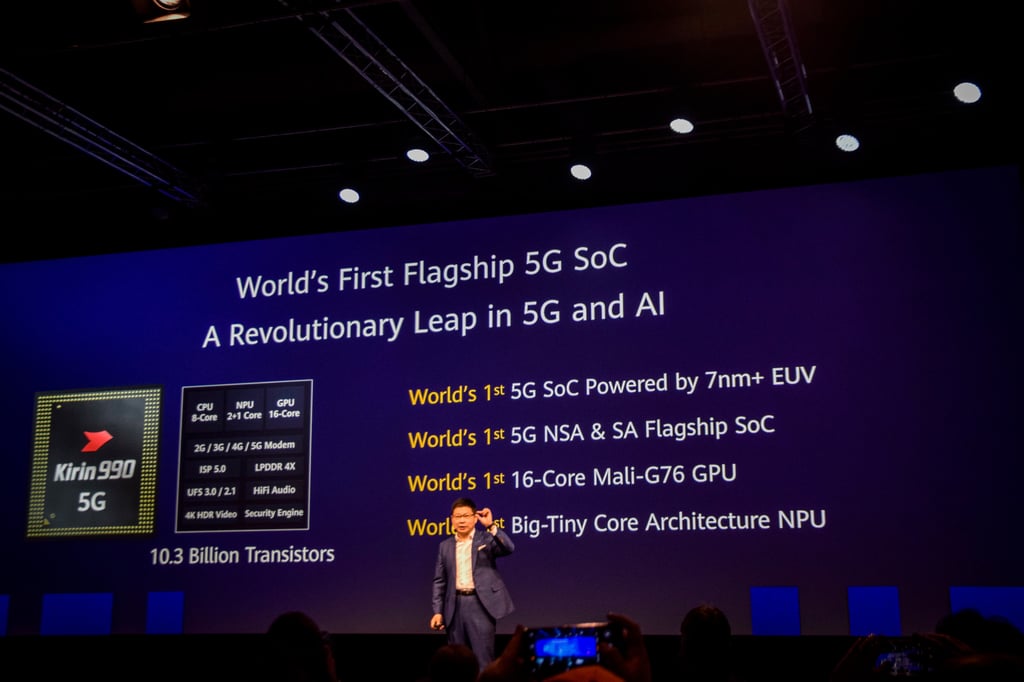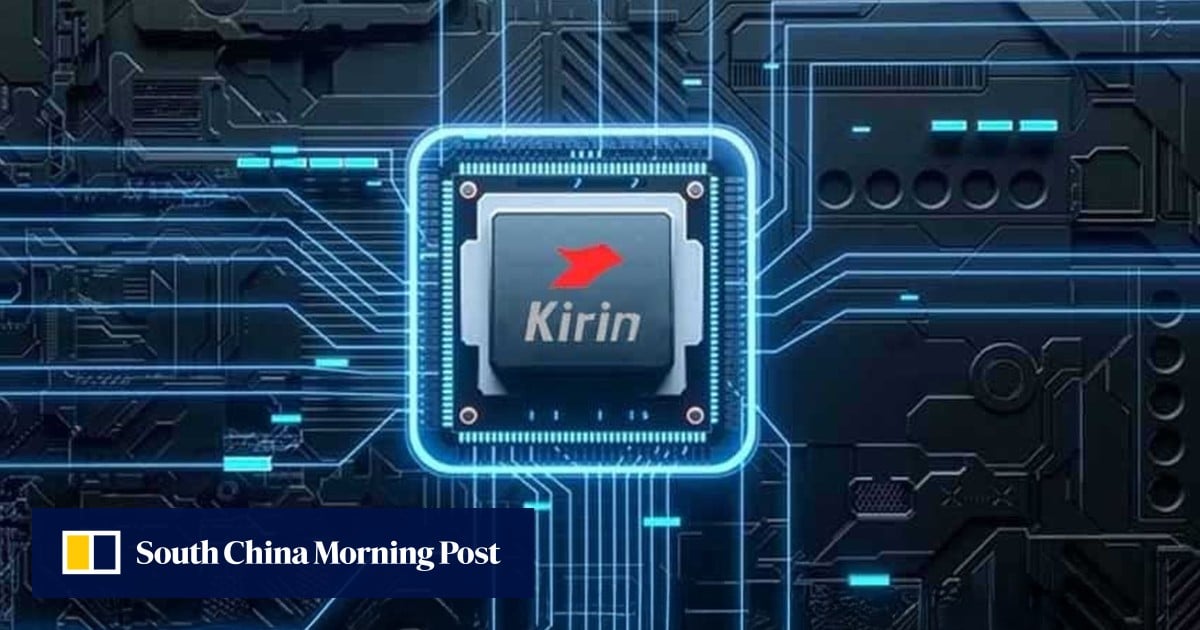Designed by subsidiary HiSilicon, the Kirin 9020 system-on-a-chip powers Huawei’s premium handsets, including the Mate 70 and Pura 80 series

Huawei Technologies has revealed that the new Pura 80 handsets are powered by its Kirin 9020 system-on-a-chip, marking the first time in about five years that the US-sanctioned company has lifted the veil of secrecy behind its advanced smartphone processors.
The name of Huawei’s chipset, which was designed by semiconductor design subsidiary HiSilicon, was found prominently displayed in screenshots shared online by Pura 80 users after a system update of the handset.
Information about the processors used by Huawei on 5G smartphones, including the Mate 60 Pro and Mate 70 series, was previously uncovered only via third-party teardown analyses, without any official confirmation from the Shenzhen-based company.
Privately held Huawei did not immediately respond to a request for comment on Tuesday.
Huawei’s Kirin 9020 reveal reflected the firm’s confidence in its silicon design capabilities and its strong comeback in the 5G smartphone market, despite rigid US tech restrictions on China.
The Kirin 9020, first seen in Huawei’s Mate 70 smartphones last year, was made by Semiconductor Manufacturing International Corp (SMIC) using the advanced 7-nanometre production process, according to a report by Canadian research firm TechInsights published in December.

Huawei Technologies’ Richard Yu Chengdong presents the Kirin 990 5G system-on-a-chip at the IFA industrial trade show in Berlin on September 6, 2019. Photo: Shutterstock
The chipset was “not a dramatic redesign but rather an incremental improvement over its predecessor, the Kirin 9010”, TechInsights said.
In 2023, a TechInsights teardown analysis found that SMIC, mainland China’s largest contract chipmaker, was behind the Kirin processor inside the Mate 60 Pro, the model that helped drive Huawei’s comeback in the 5G smartphone market.
Before that, the Mate 40 series, released in October 2020, was the last 5G smartphone line released by Huawei, more than a year after it was blacklisted by the US.
In a recent interview with state broadcaster China Central Television, Richard Yu Chengdong, chairman of Huawei’s consumer business group, recalled the struggles endured by the company’s smartphone business under US tech restrictions.
“Overnight, outside China, Huawei phones became unavailable,” he said. “Annual shipments dropped to below what we used to ship in just one month.”
A costumed visitor stands in front of Huawei Technologies’ Harmony OS booth at the ChinaJoy expo in Shanghai on August 1, 2025. Photo: EPA
Apart from dealing with semiconductor restrictions, Yu said creating Huawei’s own operating systems was part of efforts to revive its fortunes. “We saw that operating systems also involve supply chain security issues, which concern our long-term development,” he said.
Huawei aimed to make its proprietary HarmonyOS operating system a world-class mobile platform that would rival those from Apple, Google and Microsoft, according to Yu.
He described HarmonyOS’ development as a “huge adventure”, in which Huawei had invested tens of billions of yuan over the past six years and mobilised more than 10,000 developers each year.
More than 10 million devices now ran HarmonyOS 5, Huawei announced in July.
Huawei topped China’s smartphone market in the June quarter, the first time in four years, accounting for an 18.1 per cent share of shipments, according to research firm IDC.

 www.scmp.com
www.scmp.com

Huawei Technologies has revealed that the new Pura 80 handsets are powered by its Kirin 9020 system-on-a-chip, marking the first time in about five years that the US-sanctioned company has lifted the veil of secrecy behind its advanced smartphone processors.
The name of Huawei’s chipset, which was designed by semiconductor design subsidiary HiSilicon, was found prominently displayed in screenshots shared online by Pura 80 users after a system update of the handset.
Information about the processors used by Huawei on 5G smartphones, including the Mate 60 Pro and Mate 70 series, was previously uncovered only via third-party teardown analyses, without any official confirmation from the Shenzhen-based company.
Privately held Huawei did not immediately respond to a request for comment on Tuesday.
Huawei’s Kirin 9020 reveal reflected the firm’s confidence in its silicon design capabilities and its strong comeback in the 5G smartphone market, despite rigid US tech restrictions on China.
The Kirin 9020, first seen in Huawei’s Mate 70 smartphones last year, was made by Semiconductor Manufacturing International Corp (SMIC) using the advanced 7-nanometre production process, according to a report by Canadian research firm TechInsights published in December.

Huawei Technologies’ Richard Yu Chengdong presents the Kirin 990 5G system-on-a-chip at the IFA industrial trade show in Berlin on September 6, 2019. Photo: Shutterstock
The chipset was “not a dramatic redesign but rather an incremental improvement over its predecessor, the Kirin 9010”, TechInsights said.
In 2023, a TechInsights teardown analysis found that SMIC, mainland China’s largest contract chipmaker, was behind the Kirin processor inside the Mate 60 Pro, the model that helped drive Huawei’s comeback in the 5G smartphone market.
Before that, the Mate 40 series, released in October 2020, was the last 5G smartphone line released by Huawei, more than a year after it was blacklisted by the US.
In a recent interview with state broadcaster China Central Television, Richard Yu Chengdong, chairman of Huawei’s consumer business group, recalled the struggles endured by the company’s smartphone business under US tech restrictions.
“Overnight, outside China, Huawei phones became unavailable,” he said. “Annual shipments dropped to below what we used to ship in just one month.”
A costumed visitor stands in front of Huawei Technologies’ Harmony OS booth at the ChinaJoy expo in Shanghai on August 1, 2025. Photo: EPA
Apart from dealing with semiconductor restrictions, Yu said creating Huawei’s own operating systems was part of efforts to revive its fortunes. “We saw that operating systems also involve supply chain security issues, which concern our long-term development,” he said.
Huawei aimed to make its proprietary HarmonyOS operating system a world-class mobile platform that would rival those from Apple, Google and Microsoft, according to Yu.
He described HarmonyOS’ development as a “huge adventure”, in which Huawei had invested tens of billions of yuan over the past six years and mobilised more than 10,000 developers each year.
More than 10 million devices now ran HarmonyOS 5, Huawei announced in July.
Huawei topped China’s smartphone market in the June quarter, the first time in four years, accounting for an 18.1 per cent share of shipments, according to research firm IDC.

Huawei reveals Kirin chip inside 5G smartphones as firm overcomes US sanctions
Designed by subsidiary HiSilicon, the Kirin 9020 system-on-a-chip powers Huawei’s premium handsets, including the Mate 70 and Pura 80 series.
